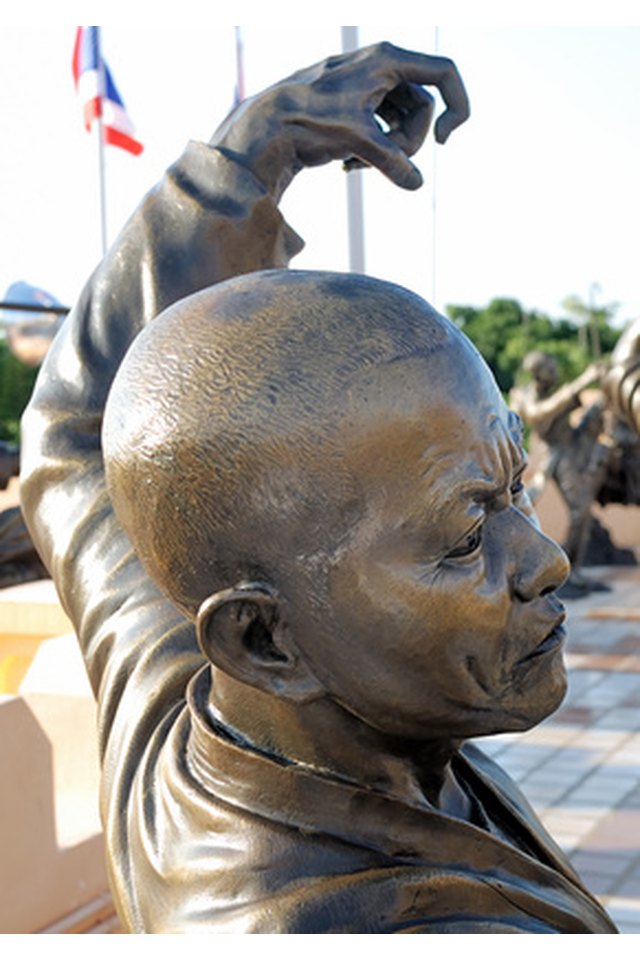Kung Fu Snake-Style Techniques

Distinguished by circular movement when delivering parries and attacks, kung fu snake style employs an upright, mobile stance as opposed to the horse stance used by most other styles. This mobile stance enables quick advances and sidestepping. Since snake stylists are taught to spring from rest to full attack, they do not use preparatory stances. Snake stylists rely on rapid, alternating jabs as well as bobbing and weaving to evade counterattacks.
Shaolin Snake Style
Unlike other animal techniques (crane, leopard, tiger and dragon), the snake style does not use hard punching techniques. When attacking, the snake stylist aims for an opponent’s vulnerable spots—e.g., eyes, throat and groin. Fingertips and palms strike with penetrating force. This technique requires “ting” or listening energy and is developed via “sticking hands” and other exercises. While the tiger style employs noisy exhales to frighten opponents, the snake style tries to neutralize an enemy’s attack with a minimum of puffery. It emphasizes rhythmic breathing and the simultaneous use of strikes and blocks.
Snake Fist (She Quan)
While its origins are unknown, this style has evolved into two schools—one from Southern China and the other from a Shaolin temple. Both employ similar fighting techniques. For example, the fighter mimics a snake’s suppleness to initiate attack. The fist represents the snake’s head, fingers form into a snake’s tongue and legs move like a snake’s tail. Both schools emphasize the use of finger strikes to the opponent’s eyes and other pressure points as well as speed.
Southern Snake Style
A relatively young style that dates back to the late 1800s, the Southern snake style uses classical Shaolin techniques with hard punches mixed with fluid Wing Chun movements. The Southern style employs a more open, upright stance. In contrast to the more balanced mix of punches, joint locks and holds seen in other styles, the Southern style focuses only on a variety of punches.
Python Style
This style leverages joint locks, throws and immobilizations to take down an opponent. With a focus on feints, the fighter learns not just strikes but techniques to mask which strike or joint lock is being thrown.
White Snake (Bai She Tu Xin)
Fingers recreate the forked shape of the snake’s tongue. The index and middle fingers extend while the remaining fingers are folded into the palm. This strike targets the eyes or other soft parts of an enemy.
Snake Comes Out of Its Hole (Qing She Chu Dong)
Fingers squeeze together to form the shape of a cobra’s head and then strike. The move can also be inverted or reversed to block a strike to the throat or eyes. Stylists strike with a bent elbow.
Water Snake Swims to Surface (Shui She Shang An)
An inverted technique that strikes at pressure points around the throat and armpits.
References
Writer Bio
Kay Tang is a journalist who has been writing since 1990. She previously covered developments in theater for the "Dramatists Guild Quarterly." Tang graduated with a Bachelor of Arts in economics and political science from Yale University and completed a Master of Professional Studies in interactive telecommunications at New York University.
